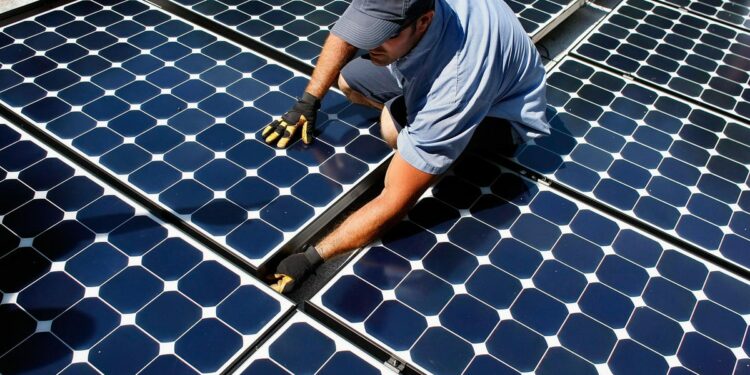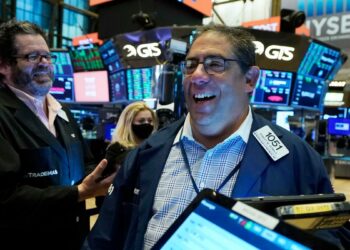Ohio may become the latest state to allow for community solar projects. Under those arrangements, homeowners could buy clean energy without coming up with a big downpayment. However, they would be obligated to make monthly payments for as long as their contracts demand. If the law passes, 2 gigawatts of community solar would need be installed across the state.
Community solar is suited for those energy customers who are environmentally aware but unable to install solar panels — for whatever reason; they could be renters, they may not be able to afford the substantial upfront costs, or their homes may not be in sun-friendly locations. Sometimes, a third party will aggregate buyers and procure the power under a long-term power purchase agreement. But it most often involves individuals who opt-in to solar programs.
“Community solar would allow more Ohio consumers who want solar but can’t put it on their own roofs to have access to solar power at a lower price,” said Tom Bullock, executive director of the Citizens Utility Board of Ohio, in a release. “This tool will enable Ohio families and small businesses to convert their electricity to Ohio-generated, zero-emission power at a price within their means.”
In Ohio, half of the new power installations could be installed on private properties, and the other half would go on environmentally-compromised brownfield sites.
Right now, 21 states and the District of Columbia offer community solar. That’s according to a recent report by the National Renewable Energy Laboratory, which says that the community solar market has been outpacing projections — a conclusion also reached by research firm Wood Mackenzie. It projects that 4.5 gigawatts will be installed nationwide in the next five years — a 9% increase over a previous forecast
The community solar industry has committed to developing 20 gigawatts of capacity by 2025, enough to power 5 million homes. To get there, though, it says that federal funding and tax incentives are necessary along with integrated grid-planning — overcoming technical barriers to allow facilities to interconnect to the network. The benefits of such improvements include better air quality in these communities and a more diverse portfolio of fuel supplies.
“One of the challenges is we have the patchwork of state laws, which allows us to determine what works and what does not,” says Garrett Nilsen, acting director, Solar Energy Technologies Office at the U.S. Department of Energy, during a webinar hosted by Our Energy Policy. How can we illustrate what is working and bring more harmony to the permitting space? We recognize there should be local autonomy but more universal information needs to be deployed.”
Energy Justice
The Harrisonburg Electric Commission is starting up a community solar project to serve Virginia residents. If the deal goes through, it will partner with Dominion Energy, the local investor-owned utility, to put an extensive array of solar panels in an industrial area. Dominion would own and operate the facility while Harrisonburg would buy the output under long-term contracts. Customers would pay a little more, but their rates would be locked in for sustained periods.
In this case, those who buy into the community solar program can’t participate in the net-metering offer — the ability to return any access power to the utility and get paid for it. Other programs allow for that. But many solar panel installers and homeowners are locked in heated battles with their utility providers over what the payments should be — a number that directly impacts when a return on investment occurs.
Solar providers often spearhead community solar programs. First Solar Inc. and SunPower are two companies doing that. This month, Soltage, an independent power producer, said it would build 4 projects in South Carolina and one in Illinois. The electricity generated will get sold to governments, commercial and industrial customers, and local utilities. It is part of a 450 megawatt solar and storage rollout announced about a year ago.
In California, more than 65 cities and counties are already powered by 100% carbon-free electricity – and all but two of those communities are served by community choice aggregators. They authorize municipalities to buy clean energy for their residents and businesses. Through aggregation, municipalities pool their energy loads and leverage buying power. Communities are not just positioned to buy more renewable energy. They can also buy into microgrids to increase reliability and economic development.
There’s a difference between community solar and community aggregation. Community solar allows homeowners to buy into shared projects, whereas community aggregation allows a third party — often a municipality — to buy on behalf of customers. Community aggregation is ideal for deregulated energy markets, which can also join community solar efforts. The two programs can work in tandem.
Communities will also have more leverage to address “energy and environmental justice” issues. Placing clean energy projects in emerging neighborhoods and providing access to that sustainable power is a form of empowerment. “The more we build, the more jobs there are,” says Jeff Weiss, executive chair of DistributedSun, at the Our Energy Policy forum. “And the more the (solar) market expands.”
Community solar projects address a critical void in the market — the ability to deliver clean energy to those customers who cannot put solar panels on their roofs. It’s potentially a win-win — an arrangement that results in cleaner air and economic development that is good for rural America and low-income areas. That should provide the political incentive to close looming regulatory and technical gaps.











